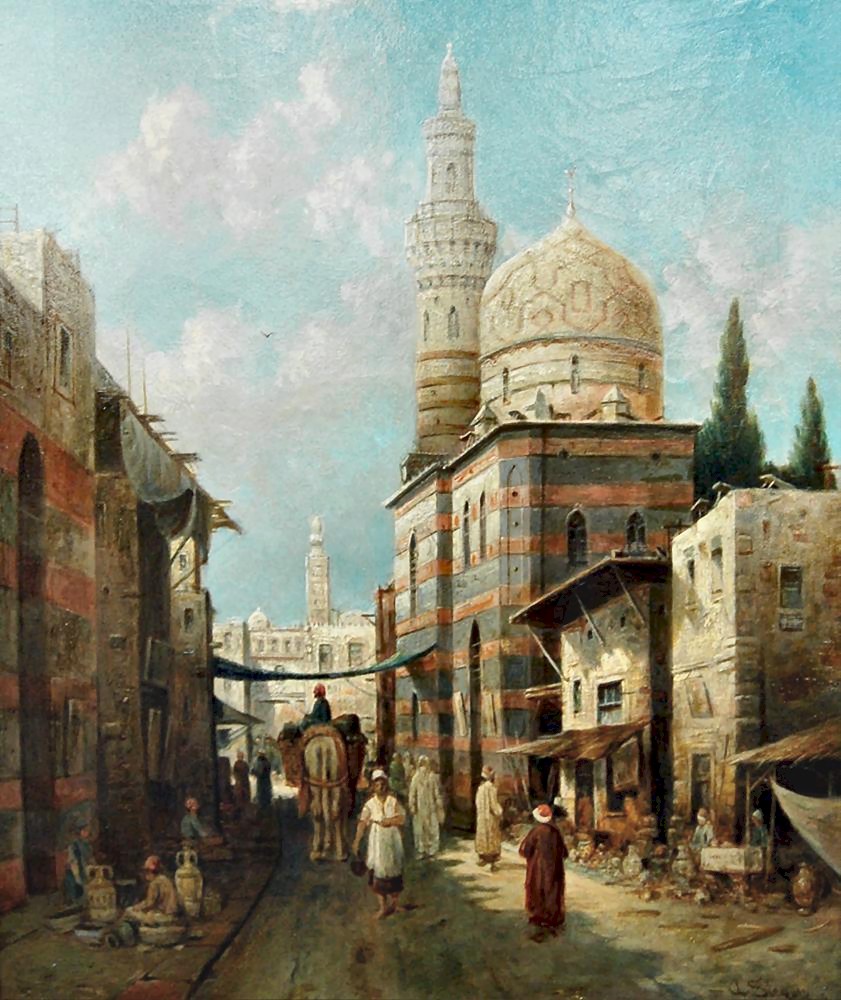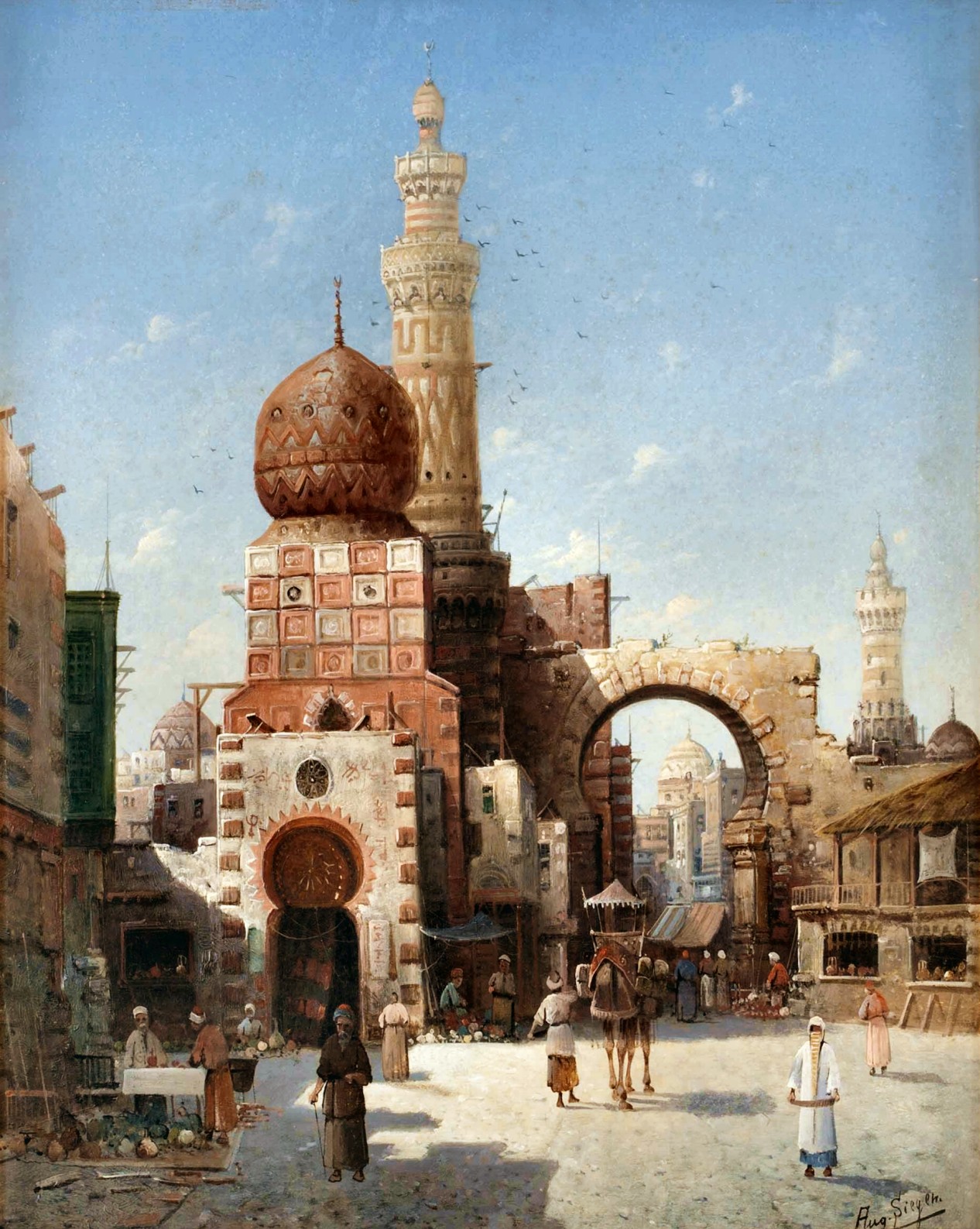August von Siegen was a German painter🎨 who specialized in cityscapes of in the style of European and "Oriental" -Eastern Mediterranean cities.
He lived in Munich but also lived and worked in Vienna. He travelled across Europe to Holland, Venice and Rome painting the architectural landscapes of cities and towns.
He also travelled to Izmir in Turkey and produced a number of Orientalist paintings. His works are highly popular with crisp, architectural details as in this fine example.
August von Siegen è stato un pittore Tedesco, attivo a Monaco e Vienna. Era un pittore di vivaci paesaggi urbani, paesaggi marini e dipinti con raffinate caratteristiche architettoniche.
Era anche considerato un artista orientalista.
Ha lavorato attivamente a Vienna e dintorni.
Mentre poco si sa di questo artista, i suoi dipinti che raffigurano paesaggi e paesaggi marini molto dettagliati sono molto ricercati quando compaiono nel mercato dell'arte.
I dettagli architettonici nei dipinti di Von Siegen possiedono una freschezza e un grande senso di luce e chiarezza.
Le sue scene di strada olandesi e tedeschi ed i paesaggi marini del XIX secolo sono tra i soggetti più desiderati da questo artista di grande talento.
























































.jpg)


